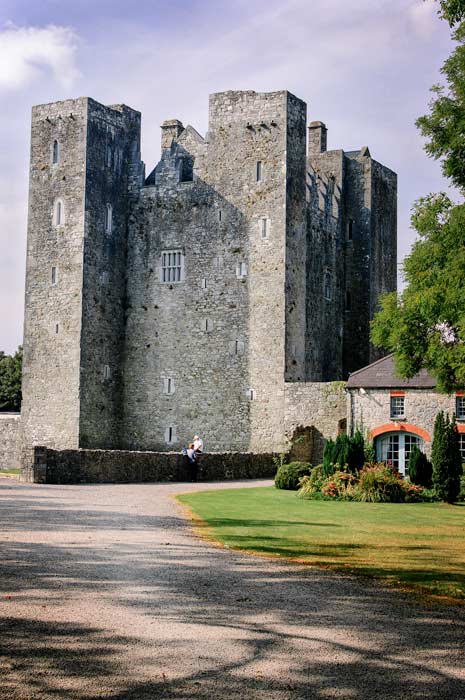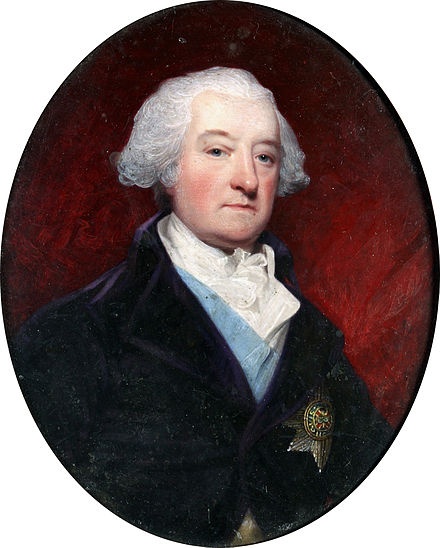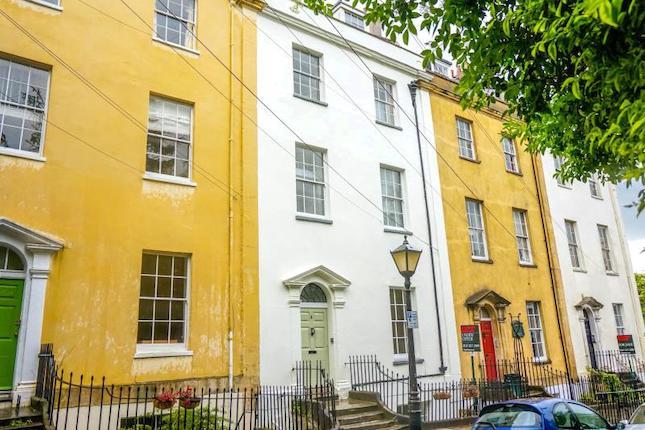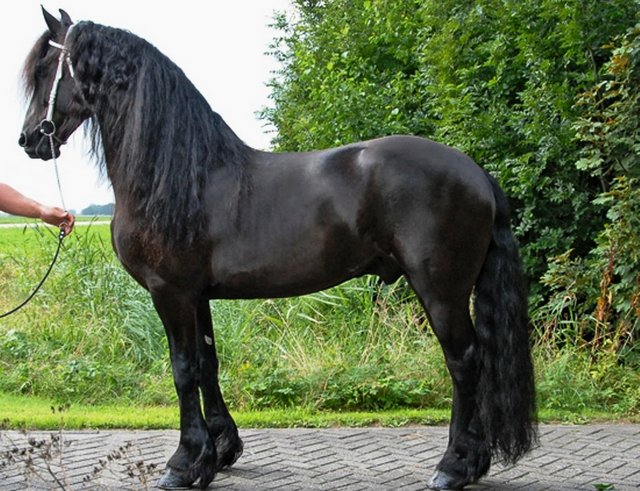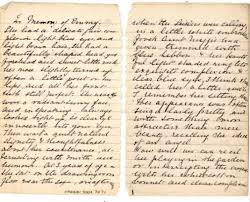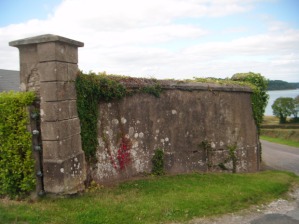THE IRISH JURIST: VOL. I. – MISCELLANEOUS: FOR THE YEAR 1849. (page 156)
COURT OF EXCHEQUER CHAMBER
ROCHE v. O’BRIEN—Feb. 1, 2.
This was error from the judgment of the Court of Queen’s Bench. The action was in covenant by the heir-at-law of John Roche the lessor, claiming the reversion in fee against the assignee of William Roche, the lessee, who claimed as devisee of the reversion in fee after the estate tail created by the will of the lessor. The remaining facts appear sufficiently in the judgment of the court. The whole question turned upon the construction of the Will and codicil of John Roche, which were as follows:
“Whenever it happens that the Aghada estate, is absent of male heirs, to wit, of the said James Joseph Roche, or by any other contingency reverts wholly to me, I hereby leave it in as full a manner as I can convey it to my nephew, William Roche, to be enjoyed by him and his lawful begotten heirs male for ever ; and, as I have perfected leases to be held in trust, of the demesne and two adjoining farms of Aghada, subject to a yearly rent accord-ing to a valuation made, I leave him my interest, if any I had, in those leases; and in case of his not coming into possession of the estate by the means before-mentioned, I leave him £6,000 of my £4 per cent. stock, to be held by trustees, the interest of which is to pay the rent of the demesne and two farms above mentioned; to my eldest grandson, James J. R. O’Brien I leave £10,000 £4 per cent. stock; to my grand-daughter, Jane O’Brien, I leave £4,000 £4 per cent. stock; to my daughter, Mary O’Brien, I leave the £4,000 £4 per cent. stock I settled on her as a marriage portion on her marriage, for her use and that of her younger children; to my niece, Ellen Verling, I leave £1,000 £4 per cent, stock, with £30 a-year profit rent I leave on her brother Bartholomew Verling’s stores; to my grandson, J. Roche O’Brien, I leave also my interest in White Point, after his mother’s death; I leave £100 to my sister, Ellen Verling; to my sister, Julia Enery, £100; to my nephew, Doctor Verling, and his sister, Catherine Ellis, £100 each, and I desire the stock on the farm to be sold to pay these legacies; to my nephew, William Roche, and my grand-daughter, Jane O’Brien, I give my household furniture, plate, &c., and it is my wish, if the rules of our church allow it, that they should be married and live in Aghada house; may it bless and prosper them and their offspring. To the parish of Aghada, I leave the school-house, and £20 a-year for its support, and also the chapel and priest’s house I leave to the parish rent-free for ever, as long as they shall be used for such qualified purposes; the five slate houses I built in the village, I leave to five of the poorest families rent free; to David Coughlan I leave the house he now lives in during his life; to my servant, James Tracy I leave the house his wife now lives in; and to my wife’s servant, Mary Ahearne, otherwise Finne, her house rent-free during their lives; and to each of those three, viz.,David Coughlan, James Tracy, and Mary Ahearne, otherwise Finne, I leave £10 a-year during their lives: having had unfounded confidence in my unhappy nephew, James Roche, I did not take legal means under the settlement I made to secure those last bequests out of the Aghada estate; I trust, and hope, and desire that whosoever is in possession of the estate do confirm these my wishes and intents. I appoint my trusty friend, Henry Bennett, (my present law agent) William Roche, and my daughter, Mary O’Brien as executors of this my last will.”
The codicil to the will was as follows :—
By my will dated the 5th day of January, 1826, I appointed my friend Henry Bennett, my nephew, William Roche, and my daughter, Mary O’Brien, executors to that will; now, by this codicil, I annul that appointment, and appoint John Gibson, barrister-at-law, Bartholomew Hackett, of Middleton, distiller, and my nephew, William Roche, as my executors to that will, and do hereby empower them to name and appoint two trustees for the purpose of managing the sums I left to my nephew, William Roche, my grand-daughter, Jane O’Brien, and my grandson, J. O’Brien, as it is my intent and will that they should only receive the interest, and the principal to remain untouched during their lives, to go to their children; out of William Roche’s interest the rent of Aghada which I have leased him is to be paid ; and I desire that he and my grand-daughter Jane, who are shortly to be married, will reside there. I leave William Roche all the stock, &c., on the farm, and to him and his wife all my household furniture, plate, and china, and make them my residuary legatees ; it is my will that my grandson, James R. O’Brien, shall live with them at Aghada until he is of age, which is to be at the age of twenty-five, and not before ; and the trustees are to pay him until that period £100 a-year to complete his education, and another £100 a-year during that period to his mother, and the remainder of the interest of his £10,000 to be paid William Roche to assist him in keeping up Aghada during that period, and I trust by that time he will have a profession by which he will add to his income ; I request and desire that nothing shall prevent his following his profession ; it is my intention that William Roche and his wife shall step into possession of Aghada house, demesne, and farms, which are leased to him in the same way that I leave it when it shall please God to take me ; in case of the death of William Roche before his wife, she is to be paid the interest of her £4,000, to be made up £200 a-year as her jointure ; and if she dies before him, he is to have the £10,000, provided she has no issue; but if she leaves issue, it is to go to them after William Roche’s death, as before directed.”
Sir С. О Loghlen for the plaintiff in error, the defendant below.—The question is, whether William Roche took an estate tail alone, or an estate tail with an expectant or reversionary fee. First, it is clear that the testator did not mean to die intestate, and, that nothing might be undisposed of, made William Roche and his wife residuary legatees. Secondly, that the testator having a contingent reversion in fee in the property, he devised it from his heir at law, and gave it to another, charging it in such a manner as to shew that whoever should have the property should take under the will. These charges cannot be enforced against the heir at law, as he takes by title paramount. Thirdly, that, having his heir at law in contemplation, he took from him that he would otherwise be clearly entitled to. He had most fully provided for him, and designedly gave the property to William Roche, for the purpose of founding a family of the name of Roche, who were to dwell in Aghada house. If the construction contended for by the plaintiff below be the true one, the manifest intention of the testator is wholly defeated. The reversion would not be disposed of; his heir would take at law, and not under the will ; and the estate would go to the very person he intended to deprive of it. The first portion of the sentence, ” I hereby leave it (the Aghada estate) in as full a manner as I can convey it,” conveyed the fee simple, and the subsequent words, ” lawful begotten male heirs for ever,” reduce it to an estate tail, with a reversion in fee. Chyck’s case, (Dy. 357, Pasch. 19, El.) That case, as reported in Dyer, is still law, and the case reported in Benloe, 300, and Anderson, 51 by the name of Baker v. Raymond, is not the same. In Abraham v. Twig, (Moore 425, 11 Jac.); Roberts v. Roberts, (2 Bul. 127, 13 Jac.) ; Blanford v. Blanford, (1 Rol. 320, 21 Jac.) ; Sergeant’s case, (2 Rol. 425) ; Herbert v. Thomas, (Har. and Wol. 434—per Littledale, J.) ; Doe d. Herbert v. Thomas, (3 Ad. & El. 128, Sheph. Touch. 445). All these authorities rely on Chyck’s case, as cited in Dyer. Daniel v. Uply, (Latch. 43,) is a decision to the same effect, by Doderidge, J., who was either at the bar or on the bench at the time of the decision of Chyck’s case. The following cases and authorities were also relied upon, and commented on during the argument—Turnman v. Cooper, (Cro. Jac. 476, S. C. Rol. Rep. 19, 23, S. C. Poph. 138; 1 Thomas’s Co. Litt. 518, 21 a.); Altham’s case, (8 Coke 154, b.) denied to be law in Turnman v. Cooper, (Pop. 138; Year Book, 21 Hen. 6, 723, b). (Blackburne, C. J.—That was the case of a deed where the whole estate passed from the grantor.) (Anon. Brownl.45) ; Holland v. Fisher, (O’Bridg. 212; 1 Steph. Black. Com. 460); Mellish v. Mellish, (2 В & C. 520) ; Barker v. Giles, (2 P. W. 279, S. C., affirmed on appeal ; 3 Bro. P. C. 297) ; Littleton & Ux v. Green, (4 M. & W. 229) ; Nanfan v. Legh, (7 Taun. 85, S.C. 2 Marsh. 107) ; Doe d. Ellis v. Ellis, (9 East. 382) ; Davie v. Stevens, (1 Doug. 321); Doe d. Murch v. Marchant, (6 Man. & Gr. 813).
Chatterton, with him R. W. Greene, Q. C., and F. Fitzgerald, Q. C., contended—That, according to the true construction of the will, William Roche took only an estate tail. That the construction contended for by the defendant below would tend further to defeat the testator’s intention to found a family, than that sought to be put upon the will by the plaintiff, as the fee would be more easily alienated. That the devise shewed no intention of the testator to dispose of his whole property ; the words were, not my estate, but ” the Aghada estate,” words of description only. The charges made by the testator upon the devised estate would take place on the reversion, whether the estate be taken by descent, or under the will. That the reversion was disposed of, and that there was no general intention expressed in the will inconsistent with an estate tail. The learned counsel distinguished Chyck’s case, and Turnam v. Cooper, and cited and referred to Altham’s case, (8 Coke, 154, b.); Ossulton’s case, (3 Salk. 336) ; Baker v. Wall, (1 Lord Ray. 185) ; Doe d. Lord Lindsay v. Colyear, (11 East. 548) ; Slater v. Slater, (5 T. R. 335) ; Nanfan v. Legh, (2 Marsh. 107, S. C.; 7 Taun. 85) ; Davie v. Stevens, (Doug. 32l ; Co. Litt. 27, a.); Church v. Wyatt, (F. Moore, 637) ; Wood v. Ingersole, (1 Bul. 63) ; Doe d. Eustace v Earley, (1 Cr. M.& Ros. 823); Winter v. Perrott (9 Cl. & Fin. 613) ; Angell v. Angell, (9 Q. В. 353) ; Oddie v. Woodford, (3 My. & Cr. 584); Doe d. Ellis v. Ellis, (9 East. 382) ; Trenke v. Frencham. (2Dy. 171) ; Chilton v. Cooper, (2 B. & Ald. 610),
Napier, Q. C., in reply—The court will effectuate the intention expressed on the face of the will. It is clear from the whole testament, the testator thought he was devising the property out and out. There is first a general expression conveying the fee, and the subsequent words cannot narrow it. By the ” Aghada estate,” he intended his whole interest, and to convey it ” in as full a manner as he could,” when he should become possessed of the reversion in fee, and the charges evidence that intention to deal with the whole. He referred to Randall v. Tuchin, (6 Taun. 418—per Chambre. J.) ; Moffet v. Catherwood, (AI. & Nap. 472) ; Cotton v. Stenlake, (12 East. 515).
Feb. 2.—ВLACKBURNE, C. J., now delivered the judgment of the court.—This is an action of covenant brought by the plaintiff below as heir at law of John Roche, the testator, claiming the rent reserved in a lease executed by John Roche to Wm. Roche, whose assigns the defendants are, and the plaintiff below insists he is entitled to the reversion, as heir at law of John Roche. The declaration states a settlement executed on the marriage of the testator’s nephew, James J. Roche, limiting the estate to John Roche for life, remainder to James Joseph Roche for life, remainder to him in tail male, with the reversion in fee to John Roche, the settlor. It then states the will of John Roche, devising his reversion to William Roche in tail male, and the death of William and James without issue male, and traces the descent of the reversion to the plaintiff. The plea of the defendant sets out the will and the codicil of the testator, John Roche, in haec verba, on the construction of which the question in this case wholly depends. The plaintiff below alleges that Wm. Roche took only an estate tail, which has now determined. (The learned Chief Justice then read the words of the will.) It is not denied that the words in the devise give an estate tail, Lord Ossulton’s case, (3 Salk. 336,) puts this question beyond doubt. The addition of the word “for ever,” makes no difference. Baker v. Wall, (1 Ld. Raymond 185). Davie v. Stevens, (1 Doug. 320,) was a devise to A. of the ” fee simple and inheritance of Lower Shelstone, to him and his child, or children, for ever.” The language of Lord Маnsfield is, every word, applicable to this case. Nanfan v. Legh, (7 Taunt. 85,) is a leading authority, and has a strong resemblance to this case, and there the devise was held to confer an estate tail, and no more, and for this position there will be found a large body of authority. The defendant below contends that there is a devise to Wm. Roche of two distinct estates, first, an estate in tail male ; and secondly, of an estate in fee expectant on the reversion. To maintain this view the sentence is divided in two, and the order of it inverted, for the purpose of avoiding the absurdity that would follow. I know of no authority for so altering the plain language of a will. The contract requires no such construction, but rather the contrary. I shall only say, that in all the reasons given in the cases for this construction, it never occurred that in a devise a sentence could be stopped in the middle. The judgment of my brother Crampton in the court below contains so able a review of Chycke’s case, that I shall not further refer to it. The judgment of Lord Ellenborough in Doe d. Ellis v. Ellis, (9 East. 882) which is now impugned by the defendant below contains a clear exposition of the law. No one can
read that case without seeing that it militates against the whole argument of the defendant’s counsel. Considering the whole will, we think the inference to be drawn from it is, that the testator intended W. Roche to take an estate tail only.
Judgment affirmed.
__________________


